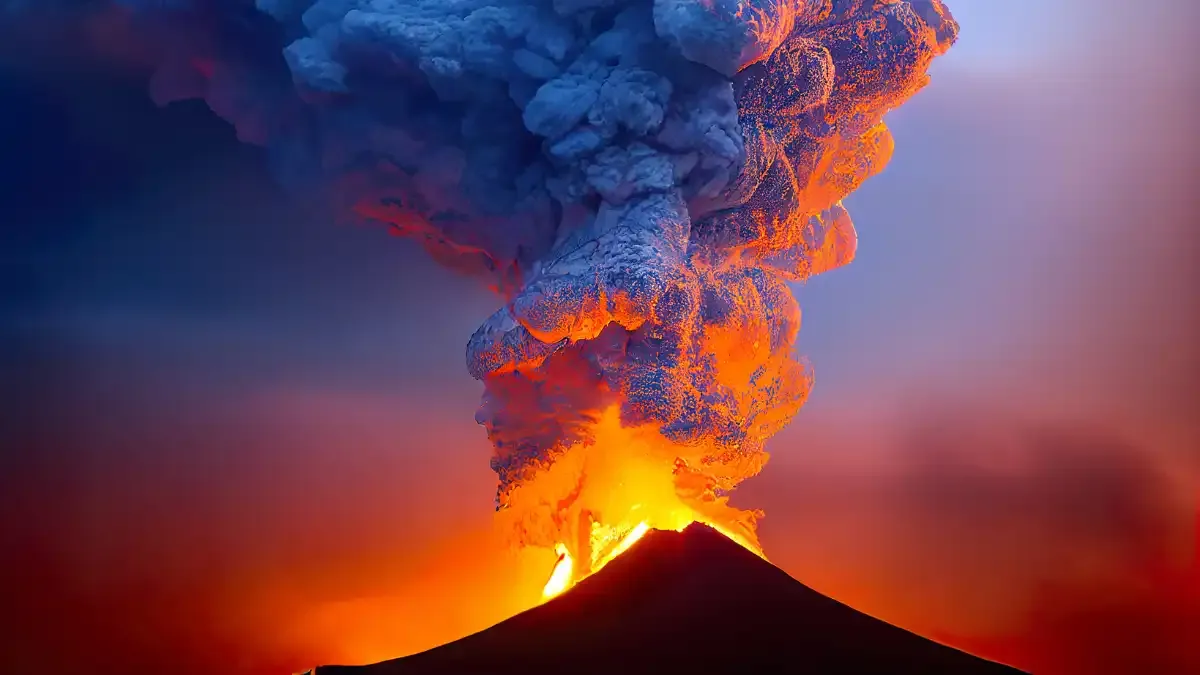Magma chambers are underground reservoirs of molten rock that occasionally erupt to the surface as lava. They are also a source of immense heat and energy that could be harnessed for human use. Geothermal energy harnesses the heat derived from the Earth's crust, serving as a valuable resource for generating electricity or providing warmth to buildings. Iceland is a leader in geothermal energy, with around 90% of its homes heated by this renewable and clean source.
However, most geothermal wells only tap into hot water or steam, not the magma itself. Drilling into a magma chamber would allow access to much higher temperatures and pressures, potentially increasing the efficiency and output of geothermal power plants. This is the ambitious goal of a team of scientists in Iceland, who are planning to drill two boreholes into the magma chamber of Krafla, a volcano in the northeast of the country. If successful, this would be the first time that humans have directly reached and measured magma in its natural environment.
What are the risks of drilling into a magma chamber?
Digging into a magma chamber is a dangerous and never-before-tried action. Here are some of the potential dangers:
- Triggering earthquakes or volcanic eruptions due to the injection of high-pressure water into the ground.
- Damaging or destroying the drill equipment due to the extreme heat and corrosion of the magma.
- Causing environmental or social impacts due to the release of gases, fluids, or minerals from the magma.
- Failing to achieve the desired geothermal output or encountering technical difficulties or unexpected geological conditions.
These risks need to be carefully assessed and managed by the scientists and engineers involved in the project. They also need to communicate with the public and the authorities about the potential benefits and challenges of drilling into a magma chamber.
How much energy could be generated from a magma chamber?
The exact amount of energy that could be generated from a magma chamber depends on several factors, such as the size, depth, temperature, and composition of the magma, as well as the design and efficiency of the geothermal power plant. However, some estimates suggest that drilling into a magma chamber could increase the geothermal output by 5 to 10 times compared to conventional wells .
One article claims that the project in Iceland could unleash unlimited energy, but this is an exaggeration. The magma chamber is not infinite, and the heat extraction would eventually cool down the magma and solidify it. Moreover, there are technical and environmental challenges and risks involved in drilling into a magma chamber, as discussed in the previous message.
Therefore, while tapping into a magma chamber could offer a significant boost to geothermal energy, it is not a magic bullet for solving the world’s energy problems. It is still a promising and innovative way to explore the potential of Earth’s natural heat.
How does geothermal energy compare to other renewable sources?
Geothermal energy is a type of renewable energy. It comes from the heat inside the Earth. We can use this heat to make electricity or to warm up buildings. It has some advantages and disadvantages compared to other renewable sources, such as solar, wind, hydro, and biomass. Here are some of the main points of comparison:
- Availability: Geothermal energy is always there, day and night, no matter what the weather is like. Solar and wind energy depend on the sun and the wind, which can be intermittent and unpredictable. Hydro and biomass energy also depend on natural resources that can vary in supply and quality.
- Location: Geothermal energy is limited by the geographic distribution of hot spots, where the Earth’s crust is thin enough to access the heat. Solar and wind energy can be installed in more locations, but they require large areas of land or sea. Hydro and biomass energy also require specific locations, such as rivers, dams, or forests.
- Cost: Geothermal energy has high upfront costs for drilling and installing wells and power plants, but low operating and maintenance costs. Solar and wind energy have lower upfront costs, but higher operating and maintenance costs. Hydro and biomass energy have moderate costs, depending on the scale and type of the project.
- Efficiency: Geothermal energy has a high efficiency rate, as it can convert up to 70% of the heat into electricity or heat. Solar and wind energy have lower efficiency rates, as they lose some of the energy during conversion and transmission. Hydro and biomass energy have variable efficiency rates, depending on the technology and the resource quality.
- Environmental impact: Geothermal energy has a low environmental impact, as it emits very little greenhouse gases and pollutants. Solar and wind energy also have a low environmental impact, but they can affect the landscape and the wildlife. Hydro and biomass energy have a higher environmental impact, as they can alter the water cycle, cause deforestation, and produce waste.
In summary, geothermal energy is a reliable, clean, and efficient source of energy, but it is restricted by location and cost. Other renewable sources have different strengths and weaknesses, depending on the availability, location, cost, efficiency, and environmental impact of each source. For more information, you can check out these web search results.

